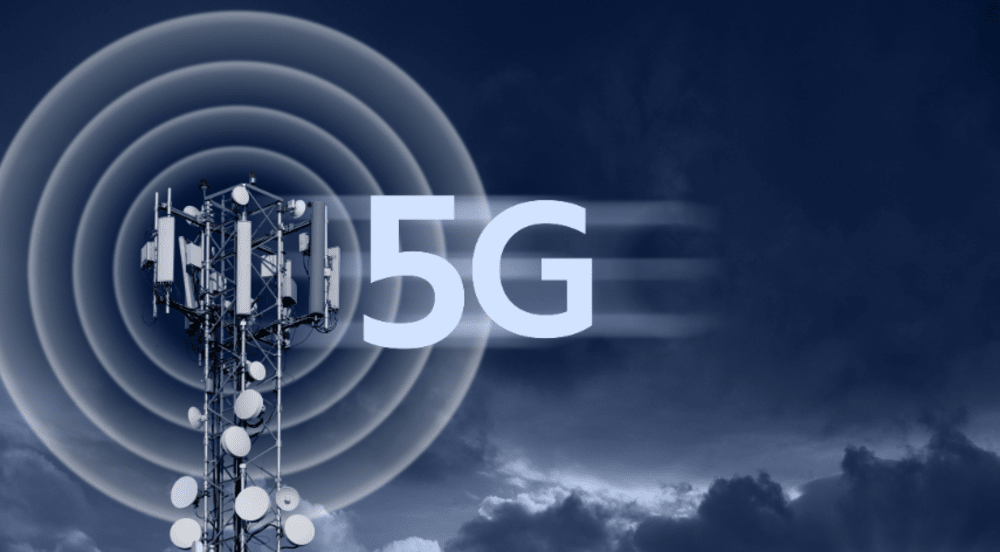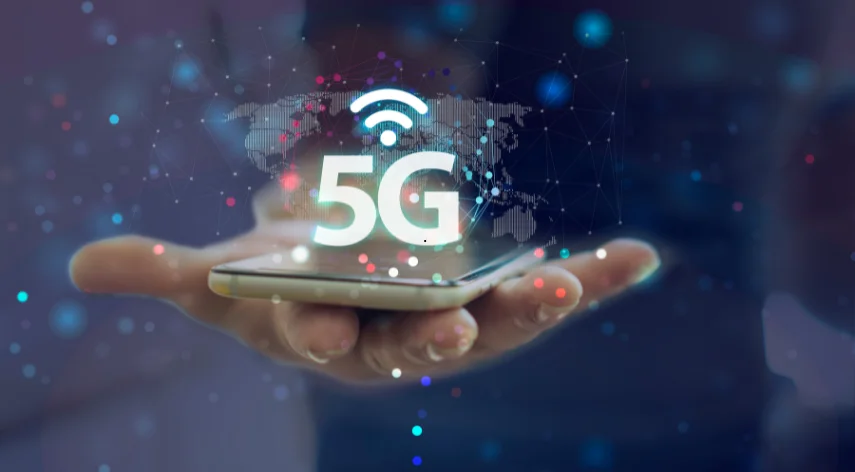Tech
The 5G Standoff: A Comprehensive Analysis by SquaringTheNet
Published
1 year agoon
By
James flick
Introduction
The advent of 5G technology marks a significant leap in the world of telecommunications, promising faster speeds, lower latency, and enhanced connectivity. However, the rollout of 5G has been met with various challenges, leading to what many are calling the “5G Standoff.” This standoff involves a complex interplay of technological hurdles, geopolitical tensions, health concerns, and regulatory battles. In this comprehensive analysis, we will delve into the key aspects of the 5G standoff, exploring the factors at play and their implications for the future of global connectivity.
The Promise of 5G Technology

Speed and Connectivity
5G technology promises to revolutionize the way we connect to the internet. With speeds up to 100 times faster than 4G, 5G will enable seamless streaming, rapid downloads, and enhanced performance for a multitude of applications. This increased speed is expected to drive advancements in various fields, including virtual reality, augmented reality, and the Internet of Things (IoT).
Low Latency
One of the most significant advantages of 5G is its low latency. Latency refers to the time it takes for data to travel from one point to another. With 5G, latency is expected to drop to around 1 millisecond, compared to the 20-30 milliseconds typical of 4G. This low latency is crucial for applications requiring real-time responses, such as autonomous vehicles and remote surgery.
Network Slicing
5G also introduces the concept of network slicing, allowing operators to create multiple virtual networks within a single physical 5G network. This enables the customization of network resources to meet specific requirements, making it possible to support diverse applications with varying needs, from high-speed mobile broadband to critical IoT services.
Technological Hurdles
Infrastructure Deployment
The deployment of 5G infrastructure is a significant challenge. Unlike 4G, which relies on large cell towers, 5G requires a dense network of small cells to ensure coverage and capacity. This means installing thousands of small cell antennas on streetlights, buildings, and other urban structures, which is both time-consuming and expensive.
Spectrum Availability
5G networks require access to a wide range of spectrum bands to deliver their promised performance. The allocation and availability of these spectrum bands vary by country, leading to disparities in the pace of 5G deployment. Moreover, the high-frequency millimeter wave bands essential for 5G offer limited range and require line-of-sight to function effectively, further complicating deployment.
Interoperability and Standards
Ensuring interoperability between different 5G networks and devices is crucial for global connectivity. The development of universal standards for 5G technology has been a contentious issue, with various stakeholders pushing for their preferred technologies and approaches. Achieving consensus on these standards is vital for the seamless operation of 5G networks worldwide.
Geopolitical Tensions
US-China Rivalry
The 5G standoff is deeply intertwined with geopolitical tensions, particularly between the United States and China. Huawei, a Chinese telecommunications giant, has been at the center of this conflict. The US government has raised concerns about the potential for espionage and cyber threats posed by Huawei’s involvement in 5G networks. Consequently, several countries have banned or restricted Huawei’s participation in their 5G rollouts.
Trade Wars and Economic Sanctions
The rivalry between the US and China extends beyond 5G, encompassing broader trade wars and economic sanctions. These actions have further strained relations between the two superpowers and have had a ripple effect on the global supply chain for 5G components and technologies. The uncertainty created by these tensions has slowed the progress of 5G deployment in many regions.
Global Alliances and Partnerships
In response to geopolitical pressures, countries are forming alliances and partnerships to secure their 5G future. The US has encouraged its allies to exclude Huawei from their 5G networks and has promoted alternative suppliers like Ericsson and Nokia. Meanwhile, China is strengthening its ties with countries willing to adopt Huawei’s 5G technology. These alliances and partnerships are reshaping the global landscape of telecommunications.
Health Concerns and Public Perception
Radiation and Health Risks
The rollout of 5G has sparked widespread concerns about potential health risks associated with increased exposure to radiofrequency (RF) radiation. While numerous studies have found no conclusive evidence linking 5G to adverse health effects, public fear and skepticism persist. Addressing these concerns through transparent communication and rigorous scientific research is essential for gaining public trust.
Misinformation and Conspiracy Theories
The proliferation of misinformation and conspiracy theories has further complicated the public perception of 5G. Claims that 5G towers are responsible for various health issues, including COVID-19, have gained traction on social media platforms. These unfounded claims have led to vandalism of 5G infrastructure and hindered the progress of network deployment.
Public Engagement and Education
Building public confidence in 5G requires proactive engagement and education efforts. Governments, telecom operators, and health authorities must work together to provide clear, evidence-based information about 5G technology and its safety. Initiatives to involve communities in the planning and implementation of 5G networks can also help alleviate concerns and foster acceptance.
Regulatory and Legal Challenges
National Regulations
The regulatory landscape for 5G varies significantly across countries. National governments are responsible for allocating spectrum, setting safety standards, and overseeing the deployment of 5G infrastructure. Navigating this complex regulatory environment requires coordination between governments, industry stakeholders, and international bodies.
Data Privacy and Security
The increased connectivity and data transfer capabilities of 5G raise important questions about data privacy and security. Ensuring the protection of sensitive information and preventing cyber threats are paramount concerns for both consumers and businesses. Regulatory frameworks must be adapted to address these challenges and establish robust safeguards for data integrity.
International Collaboration
International collaboration is essential for the harmonization of 5G standards and the resolution of cross-border regulatory issues. Organizations like the International Telecommunication Union (ITU) play a crucial role in facilitating cooperation and setting global standards for 5G technology. Strengthening international partnerships can help overcome regulatory barriers and promote the global adoption of 5G.
The Future of 5G
Innovations and Applications
Despite the challenges, the future of 5G holds immense promise. Innovations in fields such as artificial intelligence, machine learning, and edge computing will be accelerated by the capabilities of 5G networks. Applications ranging from smart cities and connected healthcare to industrial automation and immersive entertainment will benefit from the enhanced connectivity and performance of 5G.
Economic Impact
The economic impact of 5G is expected to be substantial. According to estimates, 5G could generate trillions of dollars in economic value over the next decade. The technology will create new opportunities for businesses, drive job creation, and stimulate economic growth. Governments and industry leaders must work together to ensure that the benefits of 5G are realized across all sectors of society.
Bridging the Digital Divide
One of the key goals of 5G is to bridge the digital divide and ensure that all communities have access to high-speed internet. Achieving this goal requires addressing the disparities in infrastructure and connectivity between urban and rural areas. By investing in the deployment of 5G in underserved regions, we can create a more inclusive and connected world.
FAQs
What is 5G technology?
5G is the fifth generation of mobile network technology, offering faster speeds, lower latency, and enhanced connectivity compared to previous generations. It enables a wide range of applications, from high-speed mobile broadband to critical IoT services.
How does 5G differ from 4G?
5G differs from 4G in several ways, including faster speeds, lower latency, and the ability to support a greater number of connected devices. It also introduces new technologies like network slicing, which allows for the creation of multiple virtual networks within a single physical network.
What are the health concerns associated with 5G?
Concerns about 5G and health primarily revolve around increased exposure to RF radiation. While scientific evidence does not support claims of significant health risks, public fear and misinformation persist. Transparent communication and further research are needed to address these concerns.
Why is 5G deployment challenging?
5G deployment is challenging due to the need for a dense network of small cells, spectrum availability issues, and the requirement for interoperability and universal standards. Geopolitical tensions and public perception also contribute to the complexity of the deployment process.
What is the role of geopolitics in the 5G standoff?
Geopolitical tensions, particularly between the US and China, play a significant role in the 5G standoff. Concerns about cybersecurity and espionage, trade wars, and economic sanctions have influenced the global rollout of 5G technology and the selection of suppliers.
How can 5G bridge the digital divide?
5G can bridge the digital divide by providing high-speed internet access to underserved regions. Investments in infrastructure and targeted deployment efforts are necessary to ensure that all communities, including rural areas, benefit from the advancements of 5G technology.
Conclusion
The 5G standoff is a multifaceted issue involving technological, geopolitical, health, and regulatory challenges. As we navigate these complexities, it is crucial to recognize the transformative potential of 5G technology and work collaboratively to overcome the obstacles in its path. By addressing concerns, fostering international cooperation, and investing in infrastructure, we can unlock the full potential of 5G and create a more connected, innovative, and inclusive world. SquaringTheNet will continue to monitor the developments in the 5G landscape, providing insights and updates on this evolving technology.
